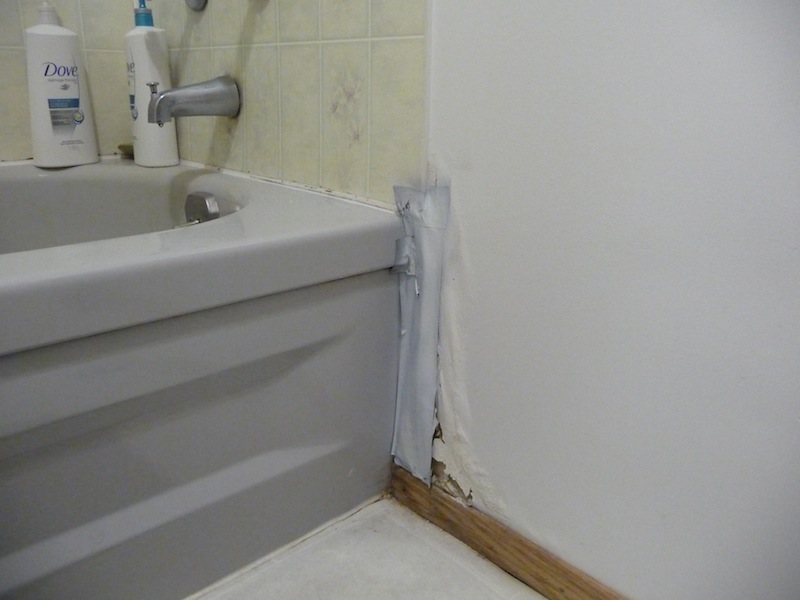Just how to Fix as well as Avoid Bathroom Water Damage
Make An AppointmentJust how do you feel in relation to Looking for Signs of Water Damage in the Bathroom?

The restroom is exceptionally prone for moist buildup as well as possible water damage because of the frequent use water in it. This short article supplies basic examination techniques to assist detecting water damage dangers.
The constant use of water in the restroom makes it exceptionally susceptible for damp buildup as well as possible water damages. By inspecting it frequently, you can minimize water relevant damages.
The complying with collection of inspections is easy to do and also should be done when in every 3 months in order to keep your restroom in good shape as well as to avoid prospective water damages caused by the bathtub, the shower, pipe joints and plumbing, sinks, cabinets, and the commode
Do not forget performing these evaluations as well as be complete while executing them. Remember that these straightforward examinations can conserve you a great deal of cash by giving very early signs for water damages
Sinks and also Cabinets
Sinks and cupboards are revealed to dampness and humidity everyday and also are often neglected. Check consistently under the sink and also on the countertop above it. Fix any drip in the trap as it might recommend drain issues. Browse the sink, slow-moving draining pipes may show an obstructed drain. Replace sink seals if they are split or loose.
Tub and also Shower
The shower and tub call for special interest and also upkeep. Check the ceramic tiles and also change if broken. Make certain that there is no missing out on cement between the floor tiles. Inspect as well as change broken caulking at joints where the wall surfaces meet the floor or the bath tub. Clogged drains pipes and pipelines problems will certainly avoid the bath tub from drying and also may suggest serious issues beneath the tub. Seek advice from a professional right away to stop architectural damage. Focus on discolorations or soft locations around the bathtub wall surfaces as they may show an internal leakage.
Plumbing
Signs for water damage are difficult to spot given that many pipelines are installed inside the wall surfaces.
Pay unique interest to floor covering as well as wall surfaces moisture and also stains as they might suggest an invisible plumbing issue. Examine moisture degrees in adjacent spaces too.
The Toilet
The bathroom is an at risk water junction. Examine the water lines and also search for leaks around the commode seat, in the tube, and also under the water storage tank. If you detect any indications of dampness on the floor around the toilet, look for leakages in the toilet edge as well as container seals.
Understand that hanging commode bowl antiperspirants increases the possibilities for obstructions.
Water Damage Signs In The Bathroom To Avoid Cleanup
Musty smell
This is one of the easiest signs to catch because musty smells are so odorous. The damp, earthy, moldy smell should be a big red flag. The smell will develop when moisture gets trapped in surfaces, and begins to facilitate mold growth. Leaking pipes under cabinets, inside walls, and behind shower fixtures will cause moisture to stay trapped and not dry, which will lead to mold growth and spread. As soon as you notice any musty smells in your bathroom, have it checked for hidden water damage and cleanup signs.
Visible mold
If the smell isn’t there to give it away, sometimes you will actually see mold growth. Finding mold in your bathroom is a serious problem, because mold is very harmful to your health. By the time mold growth is visible, it also means that water damage has already occurred and been present for some time. The only way the mold problem can be resolved is to find the source of the moisture and get it stopped. To safely and adequately remove mold, you need to have professionals handle the remediation. Do not waste any time in getting mold problems addressed, fixed, and sanitized so that you can protect you and your family from the many respiratory symptoms caused by mold exposure.
Damaged floors
Bathroom floors should be able to withstand some exposure to water while still remaining in good condition. However, when excess exposure or water leaks occur, they will begin to damage even the most water-resistant flooring. If you notice any cracking, bubbling, staining, or warping on your bathroom floors, there is probably a water leak somewhere causing the distortion. If you notice areas of the floor have become softer, or even have a spongy feeling, there is probably damage to the subfloor. Subflooring is typically made up of plywood. When plywood is exposed to water or moisture, it will absorb it. Once it has become saturated, the weight of the excess water will cause the wood to swell and soften. Check the floors in your bathroom frequently to catch any of these sings before they lead to damaged subflooring.
Changes on walls
When water leaks behind walls, it will cause changes in the drywall. Peeling plaster, blistering paint, and soggy wallpaper are all good indicators that excess water is building up behind the wall. Water leaking behind drywall will cause it to swell and be soft to the tough. If you start to notice gaps along the trim of your walls, or where tile meets the wall, it could also be a strong indicator that there is a leak behind the wall. Any changes, distortion, or damage on the walls should be evaluated as soon as you notice it to prevent further water damage and cleanup.

We were introduced to that editorial on How to Fix a Water Damage Bathroom through a friend on our other blog. Appreciated our piece of writing? Please share it. Help somebody else locate it. Thank you for your time. Don't hesitate to check our site back soon.
Instant Quote